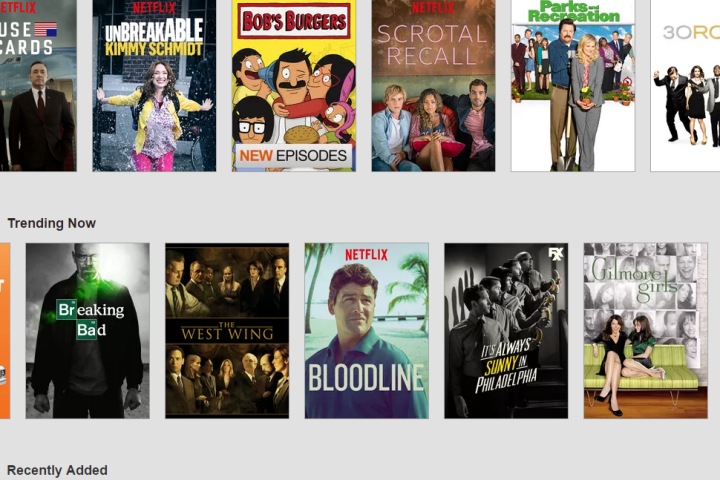
You know you love Netflix, and Netflix knows you love Netflix, so it makes sense that the streaming behemoth might have a thing or two to say about the TV you use to watch Netflix. To help new TV buyers identify the TVs that will help them get the very best Netflix experience (according to Netflix, of course), it launched its “Netflix Recommended” program back in 2015. Think of it like the Energy Star sticker on your appliances — it’s used to distinguish the TVs that are optimized for Netflix with “fast” streaming and the ability to play Netflix just as it intends.
It’s a cool idea; after all, everybody wants a better streaming experience. But what does it really mean? According to Netflix, every recommended TV must meet five out of seven criteria:
- Instant on: The TV starts up and provides access to apps like Netflix immediately, and remembers where you left off.
- Latest Netflix version: TV must ship with the latest version and support new features like video previews.
- Fast app launch: The Netflix app must launch “quickly” whether it’s just after the TV starts, or when switching from another app.
- Netflix button: There needs to be a dedicated Netflix button which, when pressed, can start the TV and take you straight into the Netflix app.
- Netflix icon: The Netflix app must be easy to find when you access your TV’s apps.
- Always ready: The TV keeps the Netflix app open in the background, even while in sleep mode, and periodically refreshes it so that when you next log in to the app, it can show you an up-to-date home screen immediately, regardless of the speed of your internet connection.
- High-res Netflix interface: The Netflix app must be presented in at least 1080p resolution, making text as legible as possible.

Netflix points out that all recommended TVs have a dedicated Netflix button, and that:
When you see the “Netflix Recommended TV” logo, it means the TV has passed rigorous testing to ensure great performance and easy access to Netflix and other services. This means you can:
- Get to Netflix within just a few seconds.
- Move quickly and easily between different apps.
- Get the latest version of Netflix.
- Have access to all the newest features for a better browsing experience.
This list covers off the first four criteria, so mandatory or not, you’re going to get them. What’s unknown is which of the remaining seven criteria the recommended TVs possess, leaving us to guess if they only have five, six, or all seven.
It’s worth noting that just because a TV doesn’t carry the Netflix Recommended badge doesn’t mean it won’t deliver a solid streaming experience. A public relations representative told Digital Trends that “Netflix Recommended TV is available to any manufacturer that is offering a new TV with a certified Netflix implementation on it,” and that while Netflix tests all of these TVs against its criteria, not every TV awarded a Netflix Recommended badge will necessarily display it on the product packaging.
Check out which 2019 TVs have made the cut so far. As you can see, it’s a pretty exclusive club for now:
Netflix recommended 2019 TVs:
- Samsung Q60R/Q70R/Q80R/Q90R/Q900R series, RU8000, The Serif and The Frame devices
- Sony BRAVIA X85G(XG85)/X90G(XG90) series and A9G(AG9) series
- Panasonic VIERA GX700/GX800/GX900 series
Wondering if you already own a Netflix recommended TV? Here are the models that qualified in 2018:
- LG 4K UHD TVs w/ webOS 4.0:
W8, E8, C8, SK9500, SK9000, SK8070, SK8000, UK7700, UK6570, UK6500, UK6300, UK6270, UK6200 - Sony W800F / WF800 series Android TVs
Netflix’s blog is the place to go for all the details on the TVs that qualified in 2015, 2016, and 2017.
Now that you know the deal, you can be on the lookout for the Netflix Recommended badge when shopping for a new TV. For more info, check out the video explaining the specs below.
Editors' Recommendations
- Best Samsung TV deals: Save on 4K TVs, QLED TVs, OLED TVs, 8K TVs
- Best Vizio TV deals: Cheap smart TVs starting at $90
- Philo: everything to know about the live TV streaming service
- What is YouTube Premium? Price, content, and more
- IP what? Explaining water and dust resistance for audio gear



